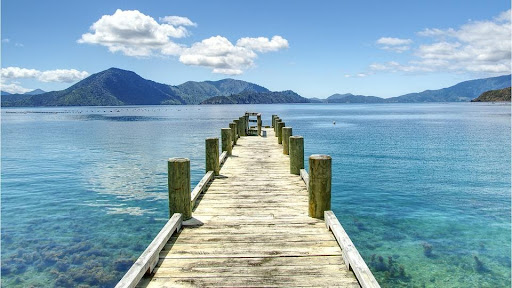There are a lot of reasons why people pick a pontoon. This includes rowing or sailing, pleasure or business, on a wild bank or a lake.
However, it does not matter what your reason is. It can be extremely difficult to make the right decision when it comes to the floating platform for your pontoon.
Since there are a lot of options to pick from, a lot of people wonder how to choose the right pontoon float platform. Every option is made for various environments and purposes.
Floating platforms can be made from different materials. People usually use them as a passage between water and land. The available forms of a floating platform, in general, are polyethylene, HDPE plastic docks, floating steel framed docks, aluminum pontoons, and concrete pontoons.
When selecting a pontoon floating platform, you have to consider the location. This will help you figure out the wave loads and wind intensity in that area.
So, how will you choose the right pontoon float platform? Here are several things you should consider:
Will Your Structure Be Temporary or Permanent?
Do you want to assemble and disassemble the floating platform regularly? Perhaps you want one that you can install permanently.
Keep in mind that the two major types of floating platforms are permanent and temporary. Make sure you know which type you need.
Where Will You Install Your Floating Platform?
So, where will you install your pontoon float platform? Keep in mind that the area has a huge impact on the type of float platform you choose.
There are 5 categories in which you can install your floating platform. This includes a marina/port, wild bank, landscaped bank, lake/pond, and sea.
To ensure your pontoon float platform is ideal for your environment, you’ll have to consider how you’re going to use it. In addition to that, you’ll also have to consider the external environmental factors that will influence your new structure.
Whenever you’re selecting your floating platform, you’ll have to carefully think about how you’re going to anchor it. There are a lot of various anchoring systems. Every system is made for various environments. This includes screwed piles, driven piles, cables, chains, sinkers, and more.
Why Do You Need to Install a Pontoon Floating Platform?
People utilize pontoons or other floating structures for all kinds of purposes. These include professional use, technical use, swimming/bathing, gaining space, mooring, and pedestrian access.
Floating Steel Platforms
While similar to the floating aluminum pontoons, floating steel platforms are made using structural steel. Every steel component is coated with hot-dip galvanized to protect against corrosion.
Typically, these forms of pontoon floating platforms are utilized as a substitute for plastic while keeping the same costs. The steel frame body is extremely resistant to flexing. In addition to that fiber concrete floats are utilized under it.
WPC composite coatings or natural wood are preferred decking on the steel frame. This pontoon floating platform is ideal for asymmetrical and circular architectural design since the steel frame can be curved into various shapes.
In general, floating steel docks are used for sunbathing islands, finger pontoons, floating platforms, boat berthing, swimming facilities, and much more.
Since the carrying capacity of the pontoon blocks is linked to one another, they’re extremely comfortable in point loads.
Steel pontoons work firmly as one piece. Steel floating platforms have a lifespan of around 15 years.
Floating HDPE Plastic Platforms
This form of the pontoon is made by molding a plastic raw material using heat. In general, these products are interconnected. The thickness of this pontoon floating platform is around 3mm to 8mm. Plastic floating platforms are usually utilized as a surface platform for places that are temporary and periodically used for swimming.
Since they’re affordable and easy to install, a lot of people prefer plastic pontoon floating platforms. Unfortunately, they do not last long. Due to the cooling and heating of plastic under the sun, capillary cracks start to develop and the material loses its flexibility.
Floating Concrete Platforms
For high amplitude purposes, concrete pontoon floating platforms are ideal. The bulk system of the concrete is fitted around a high-density EPS core. This will help generate a durable and economical block in one piece.
In general, floating concrete pontoons have the best load capacity. They are also extremely resistant to strong waves. They are also one of the types of floating platforms that last for a long period.
Floating concrete platforms are mainly utilized in marinas, floating docks, military docks, and much more.
Floating Aluminum Platforms
Manufacturers create aluminum floating platforms using water-resistant T6 type marine aluminum. In general, the aluminum frame has decking with wood composite or lumber. Typically, the floaters utilized are high-density polyethylene or fiber concrete coated EPS.
The unique design of this floating platform enables fenders and cleats to be attached directly to the channels located on it. You can also add neon LED lights around the platform to make it visible at night and at the same time provide a cozier vibe when you’re on it. In addition to that, you can easily change the system of your floating platform depending on your needs.
Floating aluminum platforms are easy to move. They are extremely lightweight as well. You can ship them to various parts of the world through land or by container.
Professionals recommend floating aluminum platforms for salt or freshwater. In general, you should use them in calm waters since they usually cannot withstand strong waves. A floating aluminum platform is usually utilized in marinas and piers for boat mooring.
Conclusion
It can be extremely overwhelming to choose the right pontoon floating platform, which is why you also need to have good inspiration for business if you are planning to buy one. This is particularly true since there are a lot of options to choose from. Fortunately, with the tips above, you can make things a lot easier for you.

